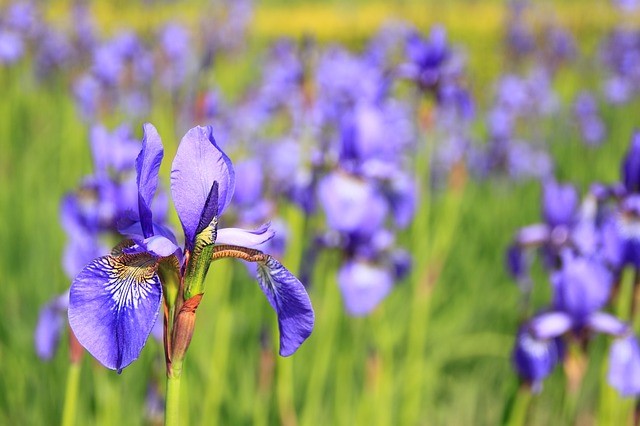Irises are perennial plants, the large number of beautiful flowers that it produces, along with the little care it needs make it an ideal plant for any garden.
Depending on the species, its size can vary, being able to find specimens from 10 cm to 1.2 m in height, giving its flowering during the spring.

In this post, we will analyze an important point when it comes to growing iris plants. And it is how to do your transplant correctly. This includes knowing where to plant, when is the right time, and what is the best method to do this.
Although it is an easy plant to care for, you should know that it will not be enough to know how to transplant it to have irises that grow healthy, strong and beautiful.
There are other points such as irrigation, amount of lighting, ideal soil, correct pruning of iris plants, among others. We recommend that you study all these points for better cultivation.
1. Where to Transplant Iris Plants
Depending on the species in question, the ideal place for transplantation may vary. In general, they do not tolerate soils that retain a lot of moisture, as this can rot the rhizomes. But there are swamp irises that can do very well in watertight soils.
Find a place that is exposed to several hours of sunshine a day. At least three-quarters of the total for the day should receive sun.
These plants are excellent to be placed on the edge of paths, accompanying decorations with rocks or placed on embankments. In this last location, thanks to the rhizome network, it is a good plant to retain the soil.
2. When to Transplant Your Iris Plants
Iris transplantation is not a task that must be done every year. But it provides a good opportunity to divide the plants to expand and spread your iris cultivation to other parts of your garden.
Clusters of irises should be dug up, divided, and replanted every 3-4 years, as when clusters become large and overcrowded, flower production is greatly reduced.
The most common is to transplant between a month and a half or two months after flowering. Note that a transplanted iris will most likely not bloom the following year.
Therefore, if you transplant before flowering, you will not produce flowers in the current year or the next. That is why it is better to transplant after flowering.
3. How to Transplant Iris Plants
We already know when is the best time to perform a transplant. Let’s see now what are the steps to follow to carry out the task.
Step 1:
Take a garden shovel and start hitting the ground a good distance from the plants. Take out the clusters of rhizomes and place them in an orderly manner on a surface to later check their condition.
Step 2:
Proceed with the separation of the rhizomes. To do this, it will be useful to wash them first with water to be able to analyze them better.
Note that each rhizome should be at least 3 inches long, with a good number of roots and leaves on top.
Step 3:
Analyze the general state of the rhizomes and eliminate all those that are damaged and/or attacked by diseases or pests. Calculate how many rhizomes you need to transplant, if you have excess you can give it to another gardener to take advantage of them.
Step 4:
Find soil with good drainage, lilies do not like clay soils that retain a lot of water. Leave at least 15 to 20 inches between plants, to allow them to expand in a good way.
Drill a small hole for each rhizome. Try not to leave the rhizomes too deep. It is preferable that the upper part of the rhizomes is above the ground, that they end up being very deep.
Once you’ve finished planting your rhizomes, water it abundantly. Carry out regular waterings in the following weeks. Better many small waterings than not overwatering, which ends up drowning the roots.
Well with this we have already reached the end of the article, I hope you have no doubts about how you should transplant your Iris plants, without a doubt they will help you beautify your garden.
→ See more information on growing Iris plants in the following post:
https://www.rhs.org.uk/gardens/partner-gardens/articles/doddington-hall-s-top-iris-tips










